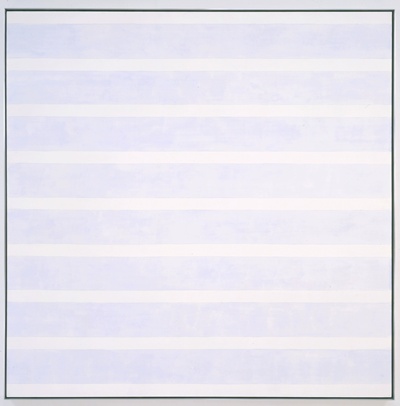Adam McGowan
Agnes Martin
The retrospective of Agnes Martin is currently shown in the Guggenheim Museum. At first glance the paintings didn’t seem like much. They don’t scream out to the audience like many paintings do. However, if you give the painting a chance, they will share their origins and its mantras.
The first Martins that I really connected with were her Tree series in the first room of the spiral ramp. From a distance, all the paintings looked the same, faded white stripes on canvas.But again, as you stared into the void of the paintings, you reacted to its refined emotional qualities. The emotional gestures were amplified by its juxtaposition with a grid that showed no relationship to nature or reality. This left you with an empty mindedness with just emotions. This gave a sense of spirituality while climbing the spiral ramp of the Guggenheim.
At the exhibit, I also got the opportunity to watch a video interview of Agnes Martin done in the 1990’s. In the video, she tells a story by using a rose as an analogy. She says that one of the curator’s daughters’ came in to visit her studio while she was painting. On her table was a rose and she asked the little girl if the rose was beautiful. The girl replied yes. Agnes takes the rose and puts it behind her back and she asks the little girl if it is still beautiful and the girl said yes. Agnes then says, that the beauty is in your mind and not in the rose. I think this analogy of the artist is very powerful and helps me get a better insight of how she thinks. I feel this story is absolutely epitomized in her paintings.

I find it helpful to position the emotions that the art inspires from a personal frame of mind, and to avoid speaking for the audience, it might be more beneficial to explain your reactions from a first person perspective. It’s so rare that art can evoke a sense of spirituality, so maybe touch on how that felt- was it a familiar feeling? Do you think it has to do with the grid, the scale, the muted colors? How were the gestures “emotional”? I think it might be worthwhile to focus on the art, rather than the anecdotes of Agnes that the Guggenheim provided.
ReplyDelete